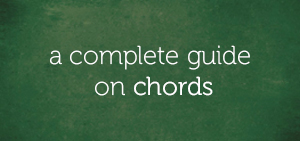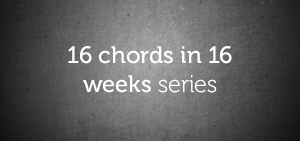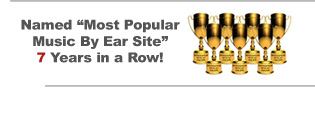When it comes to learning Neo Soul chords, understanding extended minor chord voicings just about tops the list.
Just listen to any popular Neo Soul artist (D’Angelo, Erykah Badu, Lauryn Hill, Maxwell, Jill Scott, et al) and you’d be hard-pressed not to hear extended minor chord progressions all throughout their music.
Don’t get me wrong, while major chords certainly have their place in Neo Soul music, it is minor chords that give the genre – that emerged from Soul and Contemporary R&B – its characteristic laid-back, jazzy feel enjoyed by its fans.
Today, I want to introduce you to a 3-chord progression you’re sure to recognize.
We’ll start by using basic minor 7th chords but I want to show you the incredible effect of chord extensions and reaching beyond the first octave.
Neo Soul Chords: 1-5-4 Chord Progression in Minor
We’ll be in E minor.
Here are the notes of the E natural minor scale:
(Note: This is the E Natural Minor Scale and it shares the same exact notes with the G major scale. See relative major/minor.)
The numbers, “1-5-4” simply come from the scale.
So pulling out the 1st, 5th, and 4th tones gives us these bass notes:
1:
5:
4:
We will put minor 7 chords on each of these tones.
E minor 7:
B minor 7:
A minor 7:
*The diagrams show the chords going up but I prefer to go from the 1 down to the 5 down to the 4.
Already, you should be hearing a number of songs in your head that use these Neo Soul chords. Just practice cycling through these chords, adding in your own rhythm, and you should be able to come up with something nice.
Neo Soul Chords: Extensions
But to spice it up, let’s go beyond the octave.
Consider the notes of the E natural minor scale again:
An “octave” is what you get when you start on E and play this scale up to the next E.
So E to E is the distance or interval of an “octave” (just like 12 inches might be known as a foot).
But what happens if you keep going? What happens if you start on E, pass the next E (an octave) and arrive at F#?
Remember when we numbered the scale? Let’s keep our numbers going:
F# is 9, G is 10, A is 11…
*With extended minor chords, we could keep numbering this scale, but you’ll find that we hardly go passed the 11th degree. This is not the case for extended major and dominant chords, which commonly use the 13th degree (aka – “Dominant 13th chords“).
What would our 3-chord progression sound like with an added 9? (That’s the F# from the next octave).
Let’s see:
E minor 9:
B minor 9:
A minor 9:
Neo Soul Chords & Inversions
A chord inversion is how you arrange a chord.
Simply put, the number of notes in the chord dictates how many ways you can rearrange the chord (assuming all notes are being represented… but as you get into chord voicings, you’ll realize there are a ton more ways to “voice” your chord by adding, subtracting, skipping/dropping notes, and more).
Let’s try the same chord progression but rearrange the notes so that they are closer:
E minor 9:
B minor 9:
A minor 9:
Note that we didn’t add any notes. We just changed the order in which we arranged them. Yet, with just this small change, it can totally alter the way the chord sounds.
Which Neo Soul chords and inversions do you like the best?
Until next time.







Comments on this entry are closed.